International Dialogue on Urban Development: Dynamic Urbanism and Green Infrastructure
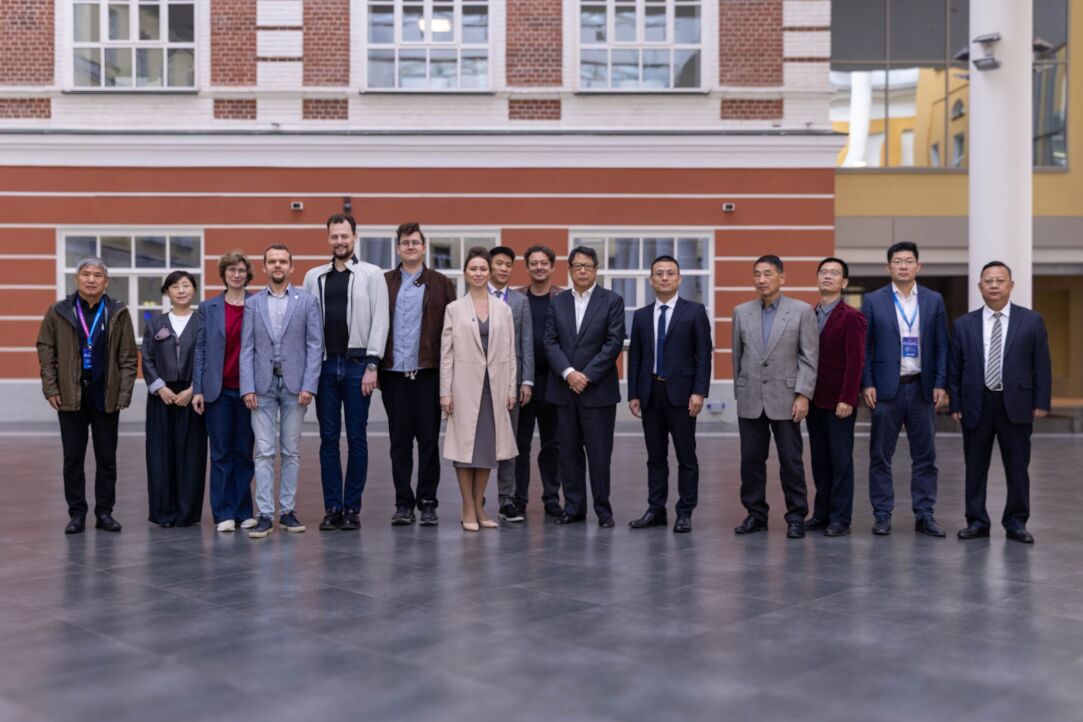
In September 2025, the HSE Faculty of Urban and Regional Development (FURD) hosted a delegation of leading scholars and urban development experts from China. Two seminars were held at the Shukhov Lab with the participation of Chinese colleagues: the first focused on green infrastructure, while the second explored the theme of dynamic urbanism. In addition, a meeting between the Chinese delegation and representatives of FURD took place at the university’s main building on Pokrovsky Bulvar. The participants discussed opportunities for expanding cooperation between universities and research centres.
Green Infrastructure
The international seminars opened with a welcoming address by Victoria Khomich, First Deputy Dean and Head of International Affairs at FURD.

‘Today’s event serves as an open discussion platform bringing together international professionals, experts, and FURD students,’ said Victoria Khomich. ‘Our students have the opportunity to ask our distinguished guests direct questions about urban development, tools, and approaches to addressing similar challenges faced by Russia and China in the field of urbanism. Naturally, our countries differ considerably in their approaches to urban development—particularly regarding green infrastructure and dynamic urbanism—but exchanging experience and engaging in professional dialogue is a unique and vital format. It helps to generate new solutions and lay the groundwork for future joint research projects.’
At the seminar on stormwater management and green infrastructure, HSE University was represented by Sergey Sivaev, Professor at the Vysokovsky Graduate School of Urbanism (GSU); Alexander Abdullaev, Senior Lecturer at GSU; and Ekaterina Andreeva, Head of the Joint Department with A101 Group of Urban Planning.
FURD’s Chinese partners also took part in the seminar—among them representatives of Tianjin University, South China University of Technology (SCUT), and the Director of the Board of the Chinese Society for Urban Studies.
The discussion centred on the development and implementation of green infrastructure as part of stormwater drainage systems in Russia and China. It was noted that, on average, only 33.4% of roads in major Russian cities are equipped with traditional stormwater drainage systems. The experts stressed that a separate drainage system with a dedicated network for surface runoff is the most efficient organisational model—one widely adopted in developed countries to ensure comfortable urban mobility, preserve real estate, and prevent flooding risks. They also emphasised the importance of complementing traditional ‘grey’ drainage systems with elements of water–green infrastructure to reduce peak loads and enable rainfall infiltration directly at the point of precipitation.
The seminar also addressed the economic aspects of stormwater management. The cost of maintaining and developing drainage systems in Russia varies by city, averaging around 200,000 roubles per kilometre of network. A lack of unified approaches and diverse management models for system development and maintenance have led to significant differences in actual maintenance costs. Moreover, more than 20 Russian cities have already introduced stormwater drainage tariffs for legal entities owning land plots. The absence of common standards and regulatory gaps in this sector continue to hinder the formulation of a coherent national strategy for urban stormwater management.
The participants put forward several recommendations to help improve the current situation:
developing a regulatory framework for surface water drainage services.
raising public awareness of the importance of green infrastructure.
attracting investment for the modernisation of drainage systems.
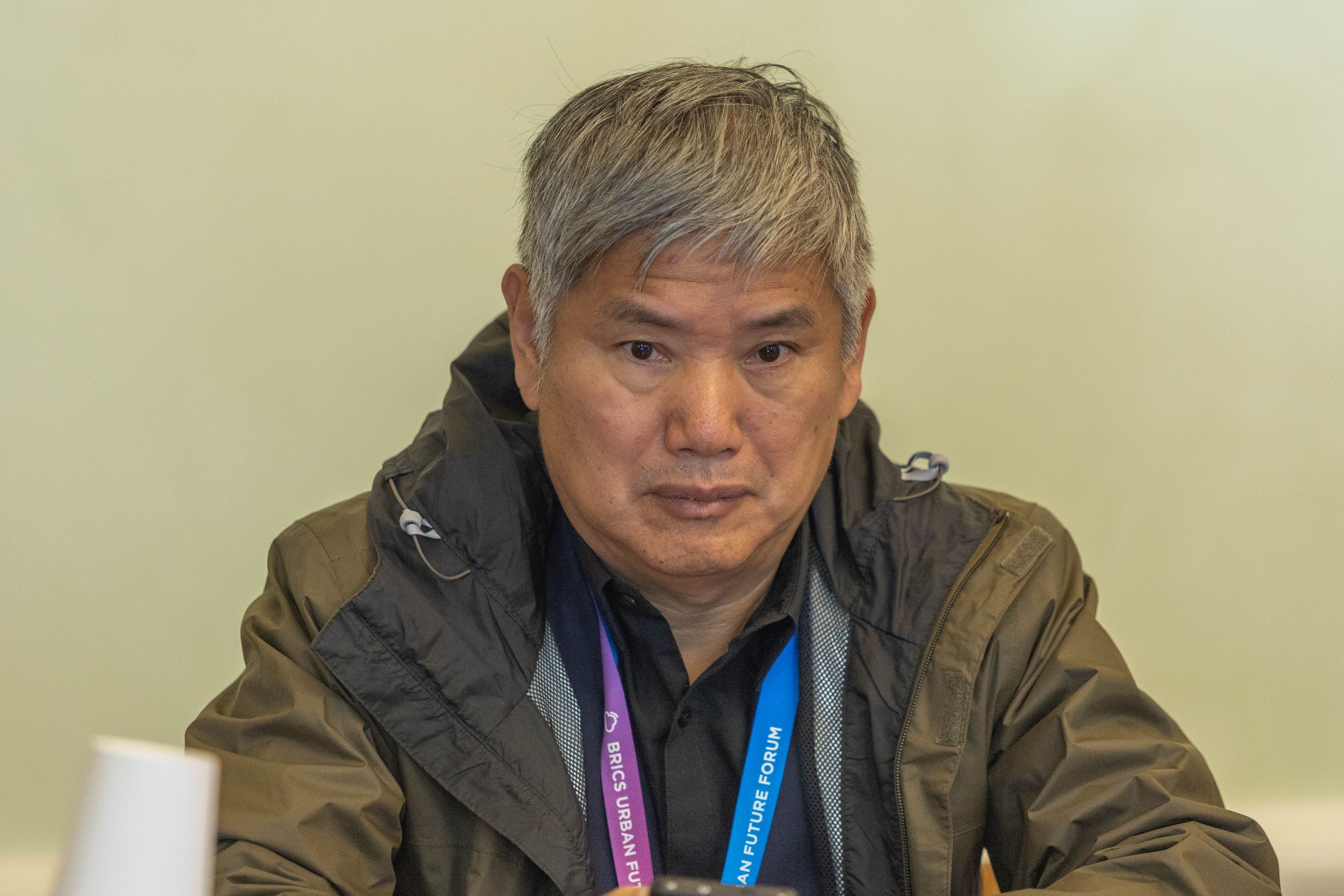
Prof. Chen Tian, from the Urban Space and Urban Design Research Institute at Tianjin University and Director of the Tianjin Ecological Engineering Centre for Urban Renewal (TEECUR), presented China’s experience in developing ‘sponge cities.’ According to the Chinese government’s plans, by 2030, 80% of urban areas in major Chinese cities will be able to absorb and reuse up to 70% of rainfall directly where it falls. This approach reduces the load on traditional drainage systems and mitigates damage caused by natural disasters.
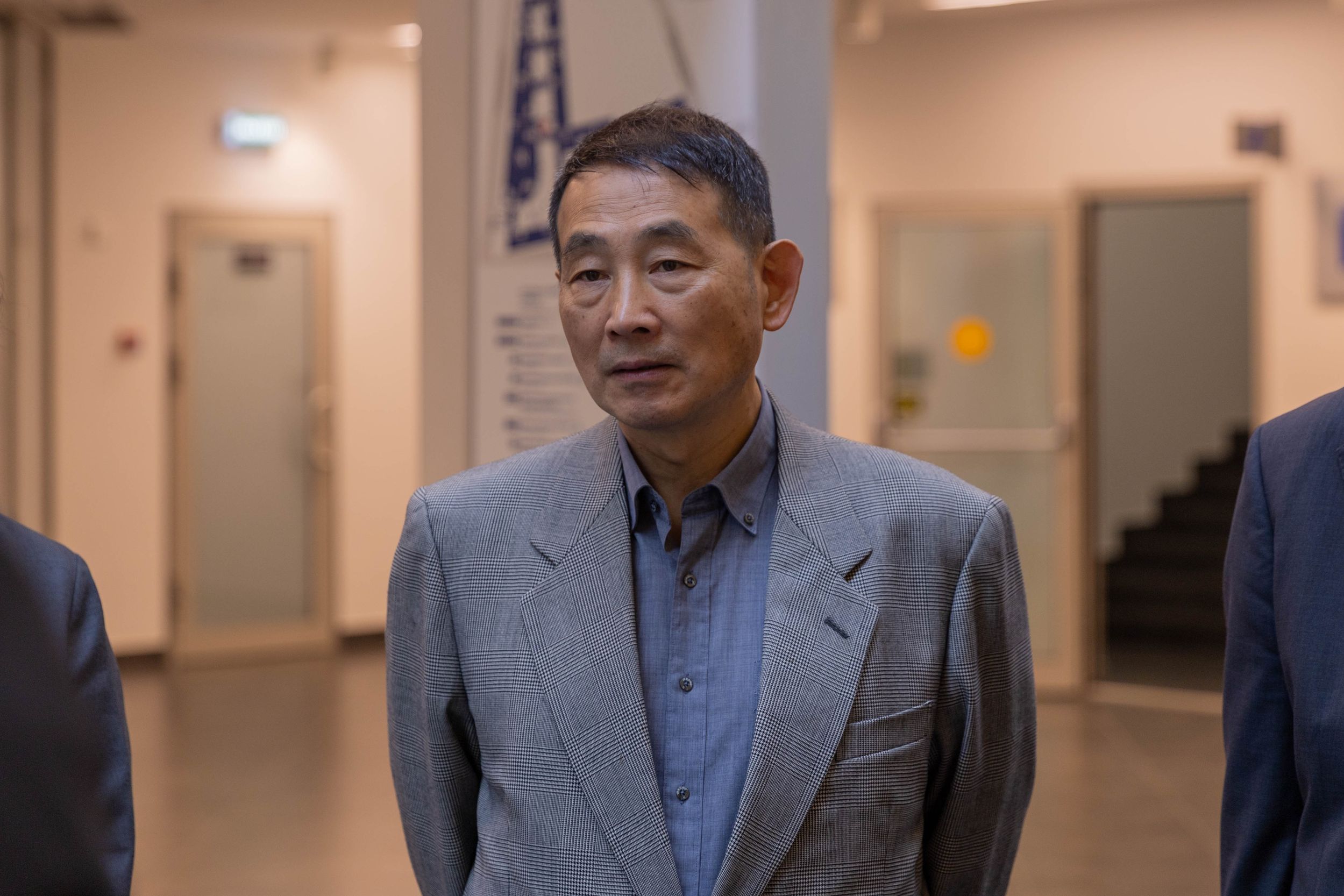
Prof. Yu Li, Director of the Board of the Chinese Society for Urban Studies, shared the results of evaluating innovative approaches to sustainable urban development using the example of the Tianjin Eco-City project developed jointly with Singapore. Covering 31.23 square kilometres and home to about 350,000 residents, the complex incorporates several key features:
use of renewable energy sources.
a waste separation and recycling system.
adoption of clean transport technologies.
These measures have produced notable results in reducing environmental impact and improving residents’ quality of life.
Prof. Zhao Miaoxi, Deputy Director of the Department of Urban Planning at South China University of Technology (SCUT), President of the Committee on New Urban Planning Technologies under the Guangdong Spatial Planning Association, and Executive Director of the Guangdong Engineering Research Centre for Smart Urban Planning, outlined the concept of a new model of sustainable urban development using the city of Foshan as an example. The key elements of this approach include:
efficient use of underground spaces.
improvement of the street and road network and transport planning.
active introduction of eco-friendly materials and technologies.
These initiatives help optimise traffic flows, reduce utility costs, and enhance residents’ overall well-being.
Following the seminar, the participants concluded that a comprehensive approach is essential for effective surface water management. They stressed the importance of engaging both the public and the business community in developing green infrastructure, and highlighted the need to expand cooperation, continue joint research, and develop methods for assessing the potential of green solutions.
Dynamic Urbanism
The second seminar featured Prof. Yang Wei, Deputy Dean of the School of Architecture at Tianjin University and co-leader of the joint project with FURD titled ‘Dynamic Urbanism: A Comparative Analysis of Cities with Rapid Population Changes in Russia and China.’ The project, which won HSE University’s 2025 International Academic Cooperation competition, aims to establish a new discipline—dynamic urbanism—focused on studying the patterns of change in cities experiencing rapid growth or depopulation.
According to Nadezhda Zamyatina, Project Lead and Professor at the Vysokovsky Graduate School of Urbanism, many researchers are studying global cities, smart cities, and other popular topics, including urban shrinkage. ‘Our research involves a comprehensive approach aimed at identifying the interconnections between processes associated with growth or depopulation occurring simultaneously in the labour and housing markets, the utilities sector, and the urban environment, as well as in relation to social issues, public sentiment, and urban policy,’ said Nadezhda Zamyatina. ‘The change in technological paradigms, which leads to the decline of some cities and the flourishing of others, is linked not only to technology and the condition of city-forming enterprises—it affects the entire fabric of urban life, and often it is the rigid institutions that have a greater impact on a city’s slide into depopulation than its industrial specialisation as such.’
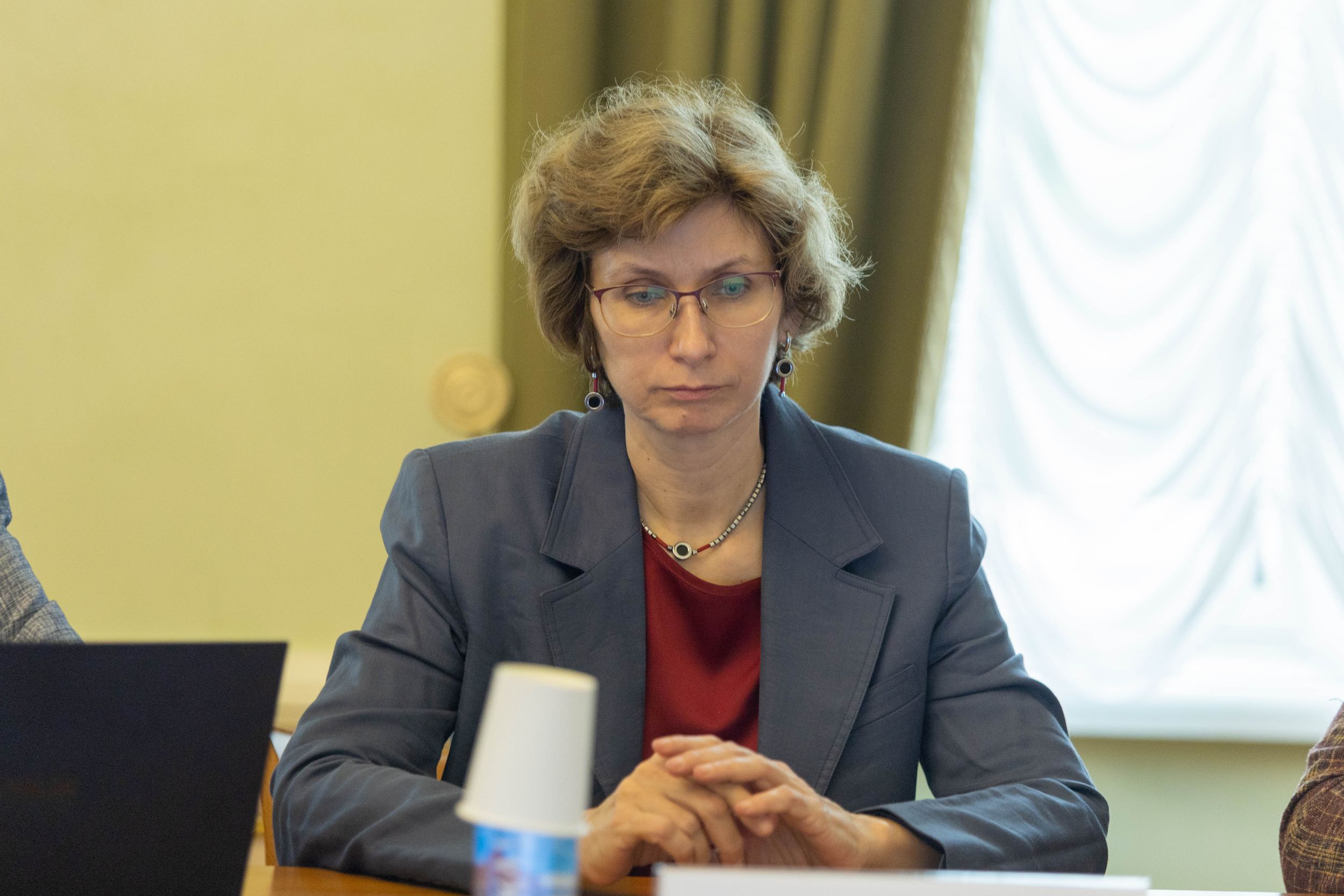
Prof. Zamyatina expressed hope that exchanging experience with Chinese colleagues would enrich both theoretical and practical approaches to addressing the challenges faced by changing cities. ‘In Russia, the most dramatic transformations traditionally occur in the country’s eastern regions—in resource-based cities—and in many cases, their trajectories resemble those of the old industrial cities in northeast China. The newly established Centre for Arctic and Northern Urban Studies at FURD will serve as a base for this project,’ she said. ‘We plan to explore all factors influencing the development of both growing and declining cities. I believe this will open up new horizons for understanding the challenges these cities face.’
Prof. Yang Wei delivered a presentation titled ‘Urban Dynamics and Sustainable Evolution of the Chinese Building Stocks.’ Her research focuses on sustainable development of building stocks, with a particular emphasis on low-carbon construction and environmentally conscious architectural design. ‘Our team includes urban planners who work on city development, and I would like to tell you about a previous study devoted to the dynamics of urbanisation and the sustainable development of China’s building stock,’ said the professor. ‘We conducted research at various levels of the building and housing stock in the context of sustainable development in the energy sector, as well as on carbon dioxide emissions, environmental protection, and economic issues. The scale ranges from individual buildings to districts, cities and the national level.’
Effective Development of Cities and Countries
The meeting between representatives of HSE University and the Chinese delegation on Pokrovsky Bulvar focused on expanding cooperation between universities and research centres and identifying potential areas for joint academic activity.
Sofia Sadykova, Deputy Head of the HSE International Partnerships Office, spoke in detail about one of the university’s strategic goals—expanding the frontiers of Russian science and education through innovative approaches. ‘HSE University is a large institution with four campuses—in Moscow, St Petersburg, Nizhny Novgorod, and Perm,’ she noted. ‘We also have a fifth, online campus—HSE Online. At present, the university has around 60,000 students, including 6,000 international students.’
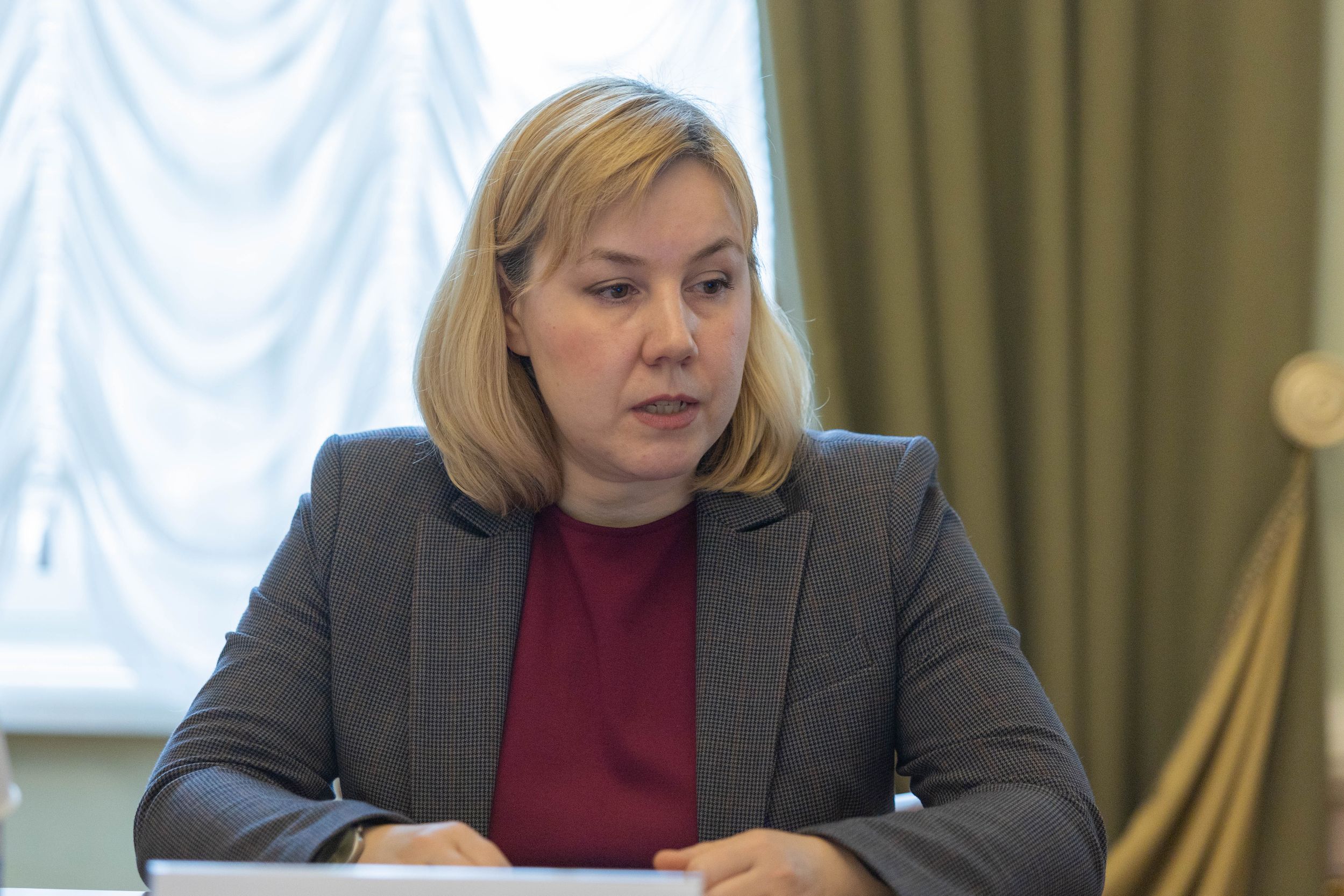
Sofia Sadykova also introduced the guests to HSE’s wide range of study areas: ‘Our focus is not limited to the social sciences and economics. We also offer programmes in mathematics, physics, chemistry, biology, and geography. The university includes the Art and Design School and the Film Institute as well.’ HSE offers around 40 English-taught degree programmes and more than 1,000 courses delivered in English.
‘We are one of Russia’s leading research universities, with a strong focus on scientific inquiry, and international cooperation plays a crucial role in this,’ Sofia Sadykova emphasised.
Victoria Khomich, First Deputy Dean and Head of International Affairs at the Faculty of Urban and Regional Development (FURD), presented the faculty’s structure and activities: ‘FURD is an interdisciplinary centre of expertise that addresses a wide range of issues in urban and regional development. We have over 100 experts, 70 lecturers, more than 600 students, and have implemented 50 projects between 2022 and 2024. Our project work covers over 150 cities, and we are always open to international dialogue and new partnerships.’
Konstantin Trofimenko, Director of the HSE Smart City Research Centre, delivered a presentation on cities’ readiness for digital transformation, as well as the technical and economic capabilities required to implement smart city projects. Andrew Borisov, Leading Expert at the HSE Centre for Transport Modelling, spoke about the concept of strategic development of transport infrastructure in Russia and the faculty’s successfully completed projects in this area.
The Chinese delegation expressed gratitude for the warm welcome at HSE University. Nicholas You, Executive Director of the Guangzhou Institute for Urban Innovation, noted that he is already involved in a joint project on the development of high-tech cities and the creation of a city innovation index co-authored by FURD researchers. This work demonstrates how innovative and balanced urban spatial development enables residents to save time and reinvest it in meaningful activities.
‘I am glad we are doing this together—it can contribute not only to the development of specific cities, but also to the growth of our two countries as a whole,’ concluded Nicholas You.
Yang Wei, Deputy Director of the Tianjin Municipal Key Laboratory for Building Environment and Ecological Technology and Deputy Dean of the School of Architecture at Tianjin University, also expressed her gratitude for the opportunity to visit HSE University. She spoke about the joint dynamic urbanism project and student exchange initiatives between the two universities, and proposed further discussions on cooperation.
Liang Chengfa, Chair and President of the Association of Technology Brokers of Suzhou and of the Belt and Road Kunshan International Advanced Technology Institute, added that cities such as Kunshan and Suzhou are eager to collaborate with HSE University. ‘We are interested in working together in various fields—education, science, and student exchange. It would be a great honour for me to welcome your delegation to China in return. We have been partners for several years now, and our cooperation continues to develop dynamically.’
See also:
Creative Solutions for Staritsa: HSE Art and Design School Master’s Students Upgrade Look of Ancient City
A fantastic bird at the entrance to ancient quarries, an exhibition hall by the ruins of a garment factory, and a pedestrian pontoon bridge over the Volga River are just some innovative ideas from master’s students of the Environment Design programme at the HSE Art and Design School, who presented their graduation projects to the local administration and developers in the city of Staritsa, Tver Region, on July 17.
HSE Art and Design School and Moscow City Tourism Committee: Global Talents in the Russian Capital
Two major projects have been launched as a result of collaboration between the HSE Art and Design School and the Moscow City Tourism Committee: the International Photo Exhibition for the BRICS Countries ‘Big Cities in Moscow’ and the International Competition of Short Videos about Cities, WOWMOSCOW, which was won by Takha Audyarahma from Indonesia. Her video will premiere on 24 August as part of the Moscow International Film Week programme.
Mongolia’s New Capital: FoURD Team Presents Master Plan in Finals of International Architectural Competition
During the finals of an international competition in Ulaanbaatar, the team from HSE University’s Faculty of Urban and Regional Development (FoURD) and Graduate School of Urbanism presented a master plan for the future capital of Mongolia—New Kharkhorum—to the country’s leadership and the international jury.
Moscow and St Petersburg Rank among Global Leaders in Spatial and Technological Development
HSE experts, in collaboration with researchers from China and India, have participated in the development of the Urban & Innovation Environment Index, a global ranking of cities. Moscow ranks fifth in the final global rating of urban agglomerations and first in the rating for those in BRICS+ countries. St Petersburg ranks seventh in the global rating and third in the BRICS+ rating.
Faculty of Urban and Regional Development Develops a Draft of a New Transport Scheme of Obninsk
On May 3rd, a briefing and presentation session of a project for the development of the city's transport scheme took place in the Obninsk administration. This large-scale project has been implemented by staff from the Institute of Transport Economics and Transport Policy Studies of the HSE Faculty of Urban and Regional Development.
What Makes Cities Attractive to Innovators?
How do we evaluate the contribution of innovations to urban development? Why do cities need innovation? How do cities attract top talents? These and many other questions were addressed by the participants of the international online discussion ‘Increasing the Innovation Attractiveness of Global Cities: Best Practices’ organised by the HSE Institute for Statistical Studies and Economics of Knowledge (HSE ISSEK) on March 1, 2023. The event also featured the presentation of new outcomes of a global study on urban innovation carried out since 2020.
Card Index: City as a Palimpsest
Any cultural landscape is a narrative or a story. A big, modern city with its multiple contesting meanings and social practices, an ongoing dialogue of different eras, and physical spaces coexisting with imaginary ones can be compared to a complex, multi-layered text. A recent paper by Ivan Mitin, Associate Professor in the Faculty of Urban and Regional Development, portrays the big city as an enormous, continuously updated manuscript.
Consortium Led by HSE University Wins Norilsk Renovation Competition
The Open International Architectural and Planning Concept Competition for the Renovation of Norilsk up to 2035 received a total of 27 submissions from 12 individual applicants and 15 consortiums from 13 countries. The winner was a consortium of six companies from Russia, Austria, and France led by HSE University. Eleven HSE University institutes and competency centres were involved in the development of the project. The aim of the competition was to create a comprehensive vision of the development of Norilsk up to 2035.
HSE Relaunches Webinar Series ‘Megacities of the Future 2:0. New Challenges’
HSE University is pleased to announce the relaunch of its popular webinar series, Megacities of the future 2:0. New Challenges. The series focuses on issuesof modern urban development and is team taught by HSE University professors and lecturers from different faculties. The webinars consider urban developmental issues through the lenses of a range of fields, including Arts and Design, Computer Science, Electronics, Mathematics and Communication Systems, Economics and Management, Urban Studies, and Russian Studies.
Exploring Growth Patterns in Russia’s Largest Cities
Robert Buckley, a senior fellow in the Graduate Program in International Affairs at The New School in New York City, works largely on issues relating to urbanization in developing countries. At the upcoming XIX April International Academic Conference on Economic and Social Development, he will be participating a roundtable on Urbanization and Economic Development during which he will give a presentation entitled ‘The Morphology of Large Russian Cities: Patterns and Conjectures’.


